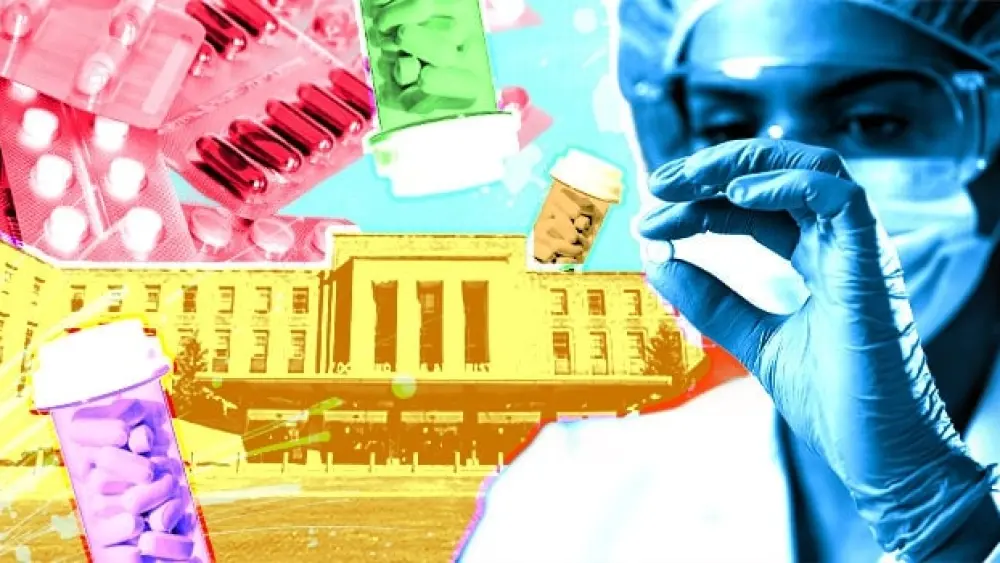At the World Vaccine Congress, antimicrobial resistance as a global health crisis grabbed top billing.
Pictured: World Health Organization sign/Fabrice Coffrini, Courtesy, Getty Images
Antimicrobial resistance (AMR) is a growing threat to global health and was associated with 4.95 million deaths in 2019 globally, more than HIV and malaria combined, as of the WHO’s last readout. Vaccines can be effective tools in combating AMR and have been highlighted by WHO.
At the World Vaccine Congress held in Washington, D.C., this week, AMR grabbed top billing.
AMR compromises many aspects of traditional treatments beyond bacterial infectious diseases. It affects surgery, organ transplantation and treatment for illnesses, including HIV, liver and kidney disease, and cancer, according to the NIH.
Vaccines and AMR
Vaccines reduce AMR in several ways. They target bacterial pathogens to reduce infections caused by antibiotic-resistant or susceptible pathogens and contribute to the protection of unvaccinated populations if sufficient immunity is maintained.
In a panel at the WVC, AMR specialist Francesca Micoli, director of the Innovation Academy for Global Health at GSK, said AMR is a global health crisis that puts the highest burden on geographies and populations with the most limited resources.
“We need to consider the high morbidity associated with AMR and the big socioeconomic impact related to this,” Micoli told BioSpace after the panel discussion. “Vaccines can prevent or reduce life-threatening diseases and decrease health care costs and the [residual consequences] after the infection resolves.”
Vaccines can combat viral infections and respiratory infections like influenza and prevent overuse of antibiotics, which stand to worsen the AMR crisis, she said.
One of the key topics the panel addressed is how AMR affects people globally, outside of developed countries.
“The global challenge of AMR needs an integrated strategy to develop new interventions to address multidrug-resistant bacterial pathogens effectively,” Micoli said. “Novel antibiotics, monoclonal antibodies, microbiota [and] diagnostic tools … can play a role with vaccination.”
Another expert in the space, Emma Harvey, M.D., Global Head of Medical Affairs, F2G, concurred.
Harvey focuses on antifungal resistance, a type of antimicrobial resistance that occurs when fungi become resistant to antifungal agents. The results of antifungal resistance on human health are similar to that of AMR, including treatment failures, prolonged illness and even death, especially in people with weakened immune systems, she said.
“There is a lot of research going on to understand mechanisms for developing resistance in vitro and understanding how resistance may spread geographically,” Harvey told BioSpace. “There is also research into developing novel antifungal agents that may work against resistant fungi. The challenge here is that finding a druggable target that doesn’t also cause significant human toxicity is a major challenge.”
Vaccine Platforms Evolve
Micoli said the panel, as a whole, focused on the potential of vaccine technology to reduce the AMR global burden.
“I believe that we have the opportunity to use amazing technologies for vaccine development, and we have innovative in vivo and in vitro tools to assess their mechanism of action. The combination of all recent scientific [progress] will allow the development of vaccines against AMR.”
Nonetheless, she said more research is required to properly evaluate the depth of the effect of vaccines on AMR, not only with bacterial targets but viral targets as well.
Micoli said the panel reviewed several advances in the vaccine space, including:
- mRNA
- Reverse vaccinology—where bioinformatics screen entire genomes of pathogens to determine genes that could lead to good epitopes, where the peptides in an antigen to which the antibodies actually bind
- Nanoparticles— to deliver vaccines to specific cells or tissues in the body, which can improve the immune response
- Adjuvants—to enhance the immune response to the vaccine by activating the immune system’s cells and signaling pathways. They can increase the production of antibodies and stimulate the activity of immune cells, such as T cells, which play a key role in fighting infections.
Beyond Vaccination
While the panel focused heavily on various aspects of vaccines, Micoli said that to address AMR globally, there must be an integrated strategy to develop synergistic interventions to fight multi-drug resistant bacterial pathogens.
Additionally, AMR poses a complex public health concern that involves stakeholders across sectors, levels of government and organizations.
“National and global policies should address the complex factors driving AMR, and be based on surveillance, prevention, containment [and] research,” she said. “WHO has highlighted the need for joint global action on AMR. Early interactions between vaccine developers and those that recommend, purchase and license vaccines are important.”
Lisa Munger is a senior editor at BioSpace. You can reach her at lisa.munger@biospace.com. Follow her on LinkedIn and Twitter at @lisagmunger.






